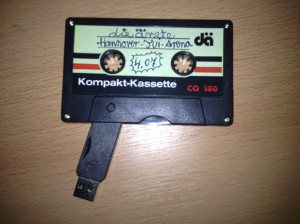My git svn workflow

Using a remote subversion repository with git locally requires some adoptions to the local git usage compared to working in a pure git environment. The reason for this is that the remote subversion don’t know about many of the concepts the local git supports (local branches or multiple local commits before checkin for example). Because of this it is essential to make it look as close to a normal svn checkin as possible when using git svn.
As I now work since quite a while with such a setup I defined a workflow for me that don’t causes any problems with the svn and gives me many of the benefits I have with git as there are the possibility to work with the version history offline, making local branches to develop new features or making multiple commits when sub tasks are done.
Before starting to develop a new feature I need to make sure everything is up to date. In contrast to a git remote repository no pull option is available here but I have to rebase the svn repository. I call the following from the master branch:
git svn rebase
This gets any new code changes from the svn and rebases all local work done by me which is not checked in yet on top of it. This is essential because svn history goes in a straight line and would not know what to do if you push a local commit that is dated before the actual newest check in.
After having done that I can create a local feature branch using
git checkout -b newFeature
Here everything works as normal. You can make commits, branch out further, go back to a former version and so on. When you want to get the newest code from the remote repository merged into your branch I prefer pulling it in the master first and rebasing it from there in my featureBranch (it is important not to merge it)
git checkout master
git svn rebase
git checkout featureBranch
git rebase master
When the new feature is ready comes the essential part where the git svn mix breaks sometimes if you don’t do it right. As I mentioned it is essential to make the commit as equal to a svn commit as possible. When using svn you don’t have the possibility to make local commits you just push everything at once to the server where it gets a version id and thats it. To achieve that behaviour with git you change back to the master, checkout the newest code changes and merge it back to the feature branch as explained above. After that we can merge the feature branch back to master:
git checkout master
git merge featureBranch
When you look at the version history now you will see that every commit done in the feature branch is now at the top of the version history. This is because we rebased the master in the feature branch and not merged it. This gives us now the possibility to pack all our local commits to one commit which will then look like the normal subversion workflow to the repository. If we had done 5 commits in our local feature branch for example we achieve this with
git rebase --interactive master~5
This will guide you through two steps. In the first you have to select which of the five commits you want to squash together. Here you should squash all subsequent commits into the first. After that a new dialogue will open which needs you to define the new commit message. Here you see all commit messages you entered in the single commits and can copy the contents to a new single message. When you are done and saved the new message git will rebase everything to one commit which lies on top in the version history. The only thing left to do is push it to svn. Once again the usual git push won’t work here. Instead we call
git svn dcommit
That is all. Everything should work fine and your new feature is checked in to subversion. You can now delete the feature branch or keep to track back the single steps you made to develop the feature.
Update:
Just to clarify, the idea is not to work weeks long on a feature and try to integrate it with a big bang all at once. This was just meant for small features that require just a few hours or maybe a day of work. If you implement a larger feature you obviously should commit smaller portions of your code changes to svn to make your progress clear and reproducible and avoid large merge conflicts with other team mates changes. In the beginning I tried to dcommit all my single commits to svn which worked to a point but had one nearly fatal break. Since then I try to avoid that and use the described workflow.

